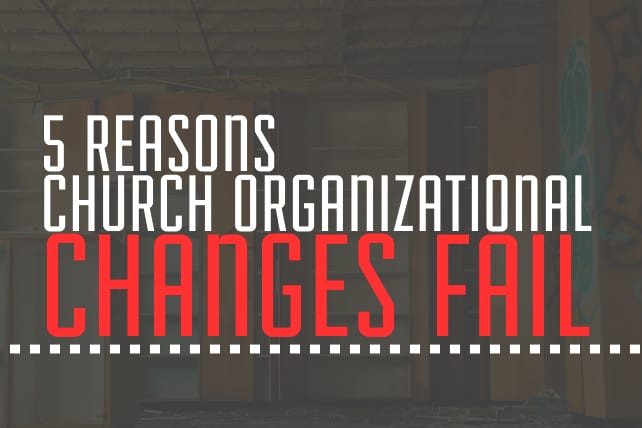It is one of the most common questions I am asked.
Essentially, the question, in one form or another, deals with organizational change. The church wants to change its staff structure. The leadership wants to reconsider the roles and functions of elders or deacons. The lead pastor wants to have different people reporting to him.
To be clear, organizational change is absolutely necessary…some of the time. But much of the time, we lead organizational change for the wrong reasons. And the results are often frustration, exhaustion and loss of momentum. Here are five clear reasons church organizational change fails:
- The change is a substitute for dealing with people issues. There are one or more people in the organization who are problems in their current roles. They may be over their head, lacking people skills, lazy or incompetent. Instead of having the courage to confront the people directly, we organize around them. This erroneous move is sometimes called a “work around.” You are working around the real issue instead of dealing with it directly.
- The change becomes a substitute for execution. Work is not getting done in some areas. Ministry is languishing in other areas. The church tries to create an organizational structure to get the work done. But the greater need is simply for people to roll up their sleeves and do the work, as messy as it can be. Organizational change is not a solution for poor execution.
- The change gives a false sense of comfort and security. Sometimes leaders make organizational change and declare the work done once the changes are made. But the work should only be beginning after the change. The new organizational structure gives a false sense of comfort and security that the challenges have been met.
- The change does not keep up with the pace of other changes. Many organizational structures are so rigid or complex they cannot adapt to the fast pace of change. The new structure thus becomes a hindrance for future and greater health.
- The change is a copy of another church. There is nothing wrong with emulating another church’s organizational structure. But if we fail to discern if the new structure is really best for our context, the change will do us more harm than good. Unfortunately, too many church leaders contract emulation fever and it makes the whole church sick.
Change done for the right reason is good. Change done for the wrong reason or for the sake of change itself can leave the church in a more difficult position than keeping the status quo.
Lead change well. Lead organizational change well. Learn what is best for your church rather than copy another church. Seek wisdom before action.
This article originally appeared here.












